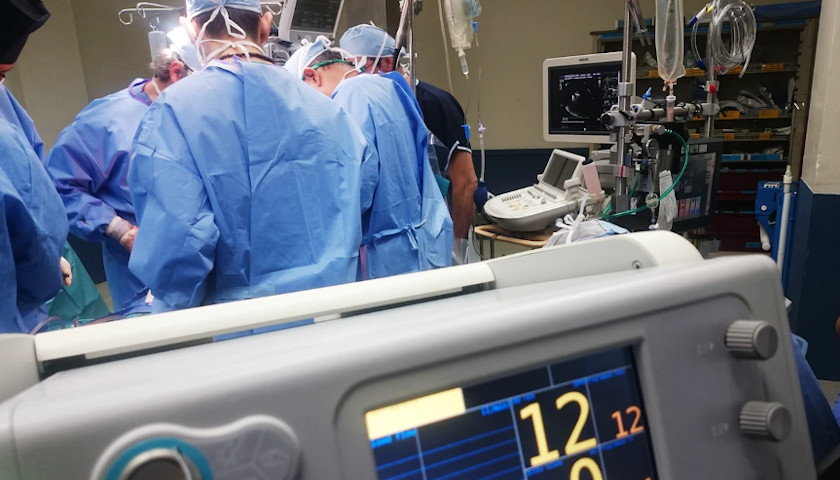A recently-released policy memo by The Buckeye Institute exploring the rising costs of healthcare in the U.S. found that the largest single driver of costs in the industry is rising hospital costs.
The memo, authored by Rea S. Hederman Jr. (pictured above), executive director of the Economic Research Center and vice president of policy at The Buckeye Institute, identified three specific contributions to the rising hospital costs in the nation – hospital consolidation, excessive spending, and over-expansion.
In the memo, Hederman detailed how hospital consolidation has reduced the number of hospitals and, as a result, has insulated pricing from competition. Hederman also pointed out how hospitals further limit competition by acquiring private physician groups which also leads to insulated prices.
“One reason hospitals can charge insurers and patients exorbitant prices stems from a lack of market competition…Demand for healthcare rises, but the number of care providers declines, allowing the remaining consolidated providers to charge higher rates,” Hederman said.
Hederman cited the city of Columbus as an example of hospital consolidation driving up costs for local residents, noting how communities with less than four competing hospitals statistically experience significantly higher hospital costs.
When it comes to over-expansion and excessive spending among hospitals, Hederman explained that unneeded expenses drive up costs for patients – especially at a time when hospital occupancy continues to decline and “more than a third of all hospital beds are unoccupied.”’
“Hospital prices also continue to rise simply due to excessive spending and over-expansion. New spending is needed, of course, to take advantage of medical innovations, update old equipment, and refurbish hospital infrastructure…Taking on new debt in an era of high interest rates means that the hospital will need to raise revenue to make those payments, which means raising prices for patients, insurers, and taxpayers,” Hederman explained.
Hederman used Ohio State University as an example of hospitals over-expanding and driving up costs, noting how the institution’s expansion of its Wexner Medical Center to incorporate more than 800 new beds continues to proceed despite the underwhelming demand for such expansion.
Looking towards the future, Hederman urged policymakers to “seek ways to make healthcare providers more competitive by increasing the number of market competitors” in order to “improve the quality of care and reduce the prices charged for it.”
In regards to excessive spending and over-expansion, Hederman recommended that hospitals “submit to stricter cost-benefit analyses to ensure that the inevitable expenses incurred and passed along will be worth the price the patients will be made to pay.”
– – –
Kaitlin Housler is a reporter at The Ohio Star and The Star News Network. Follow Kaitlin on X / Twitter.
Photo “Rea Hederman Jr” by Rea Hederman Jr.. Background Photo “The Buckeye Institute” by The Buckeye Institute.






He says that hospital consolidation (e.g. big hospitals buying little ones) is a factor in increased health care costs. Then he says that too many beds are a factor. These seem to be mutually exclusive. Hospitals have to go through all sorts of red tape to get the government to allow them to increase capacity. That’s one factor that keeps hospital costs up.